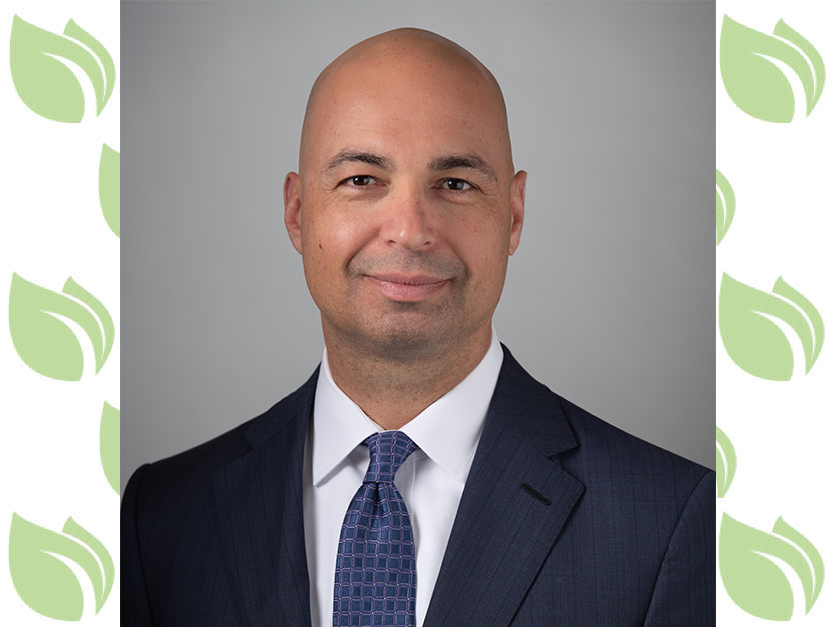There’s a consensus today among many in conservation and government that farmers can be at the forefront of the fight against global warming through carbon emissions reductions and carbon capture. We envision a world where a farmer can harvest both the crop on the top of the soil and the carbon sequestered inside it. But that world doesn’t exist today – there’s no standard approach to tracking on-farm carbon performance; no method that millions of farmers could apply reliably and consistently, regardless of location.
As the world’s largest agricultural retailer and provider of crop inputs – Nutrien works with 500,000 grower customers globally – and we see potential for the carbon economy to power American agriculture. We think there’s a way to build a multibillion-dollar marketplace for carbon credits that would transform carbon into a financial asset for American farmers.
Right now, farmers worldwide only provide about 3 percent of the carbon credits sold on global markets. Yet with 3.5 billion acres of land used for farming and the demand to feed nearly 8 billion people worldwide, farmers have enormous potential to put carbon back into the land. By our estimates, a third of the carbon credits the world will need in the next several years could come from farming – creating a market that we expect to grow to $100 billion within the next decade.
Last year, we announced our grower-centered, end-to-end carbon program that focuses on incentivizing farmers to adopt agronomic practices proven to increase soil carbon sequestration and reduce GHG emissions. The program will generate high-quality carbon credits at scale, while supporting a modern system for the carbon economy. We’re targeting 100,000 acres of cropland for our pilots this year, in Ohio, Illinois, North Dakota, Maryland and Canada, and we believe demand for the program will outrun supply.
Some of the ways farmers can reduce GHG emissions and capture carbon in the soil are well known, such as the use of inputs that optimize nitrogen uptake and use by the crop, no-till methods that minimize soil disturbance, and planting cover crops between growing seasons to naturally draw gases from the atmosphere and capture them in the soil. What’s been missing is a trusted and agreed-upon approach to measuring and verifying carbon performance, and a system to make those measurements reliable and available to farmers, regardless of how many acres they grow.
While some similar carbon-credit programs for agriculture have been announced, many still rely on broad estimates of carbon improvements over many acres, due to the difficulty and cost of verification and validation. It’s essential that any system of carbon-credit farming is built on clear, science-based standards tied to real-world results. Just as farmers use science to vouch for the integrity of their food products from field to table today, they need a trusted system to show that the carbon reductions they generate are genuine and verifiable.
As part our carbon program, we will work with growers using advanced digital tools – already in place on tractors, drones and through software apps used on some farms – to measure not just how well the crops perform, but how much emissions can be abated and carbon returned to the soil on each specific acre. Those results will then need to be verified using industry-standard soil sampling and science-based modelling techniques. Only then can that data generate carbon credits that could be purchased on voluntary markets.
Our research shows that farmers working their fields to maximize carbon abatement and capture could earn up to $20 per acre for every ton of carbon reduced or stored. Meanwhile, these same practices also boost crop productivity and support efficient use of inputs that could provide an additional $30 per acre in returns – enough to make carbon a new type of cash crop for US farmers.
As excited as we are by the prospect of American farmers helping to solve the climate crisis, we know we can’t move alone. We need partners across the agricultural industry and other sectors to support US-grown carbon credits. We need governments to support their agricultural communities, and help create the conditions for these markets to launch.
And, quite obviously, we need the buy-in and participation of the farmers themselves! Farmers have demonstrated their adaptability over many generations to implement new methods that boost output and conserve natural resources – but they don’t have the luxury of experimenting with their time or their land. We need to build a system that delivers real value to the growers who use it. One that’s rooted in science, transparency and the trust of the people who know the ground the best.
Chuck Magro is President and Chief Executive Officer of Nutrien. In addition, Chuck is vice chairman of the International Fertilizer Association and past chair and current board member of The Fertilizer Institute. Most recently, Chuck joined the World Economic Forum’s Food Systems Initiative as a Board Steward; providing strategic leadership to build inclusive, sustainable, efficient, and healthy global food systems. Chuck also plays an active role on the boards of the Business Council of Canada, Business Council of Alberta and the Canada Pension Plan Investment Board.
For more news, go to www.agri-pulse.com.

